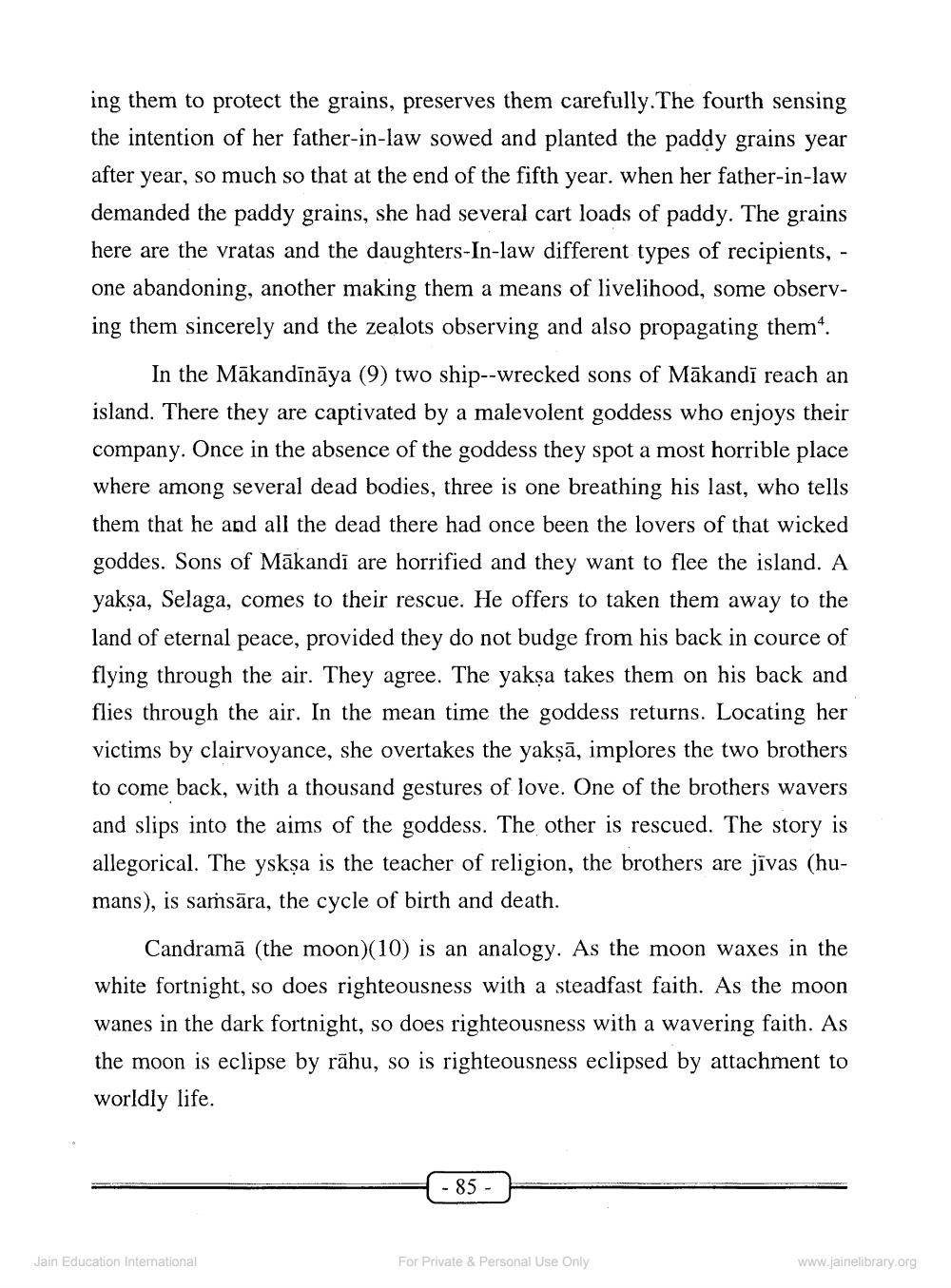________________
ing them to protect the grains, preserves them carefully. The fourth sensing the intention of her father-in-law sowed and planted the paddy grains year after year, so much so that at the end of the fifth year. when her fatherdemanded the paddy grains, she had several cart loads of paddy. The grains here are the vratas and the daughters-In-law different types of recipients, - one abandoning, another making them a means of livelihood, some observing them sincerely and the zealots observing and also propagating them4.
In the Mākandīnāya (9) two ship--wrecked sons of Mākandī reach an island. There they are captivated by a malevolent goddess who enjoys their company. Once in the absence of the goddess they spot a most horrible place where among several dead bodies, three is one breathing his last, who tells them that he and all the dead there had once been the lovers of that wicked goddes. Sons of Mākandi are horrified and they want to flee the island. A yakşa, Selaga, comes to their rescue. He offers to taken them away to the land of eternal peace, provided they do not budge from his back in cource of flying through the air. They agree. The yakṣa takes them on his back and flies through the air. In the mean time the goddess returns. Locating her victims by clairvoyance, she overtakes the yakṣā, implores the two brothers to come back, with a thousand gestures of love. One of the brothers wavers and slips into the aims of the goddess. The other is rescued. The story is allegorical. The yskșa is the teacher of religion, the brothers are jīvas (humans), is samsāra, the cycle of birth and death.
Candramā (the moon)(10) is an analogy. As the moon waxes in the white fortnight, so does righteousness with a steadfast faith. As the moon wanes in the dark fortnight, so does righteousness with a wavering faith. As the moon is eclipse by rõhu, so is righteousness eclipsed by attachment to worldly life.
- 85 -
Jain Education International
For Private & Personal Use Only
www.jainelibrary.org




